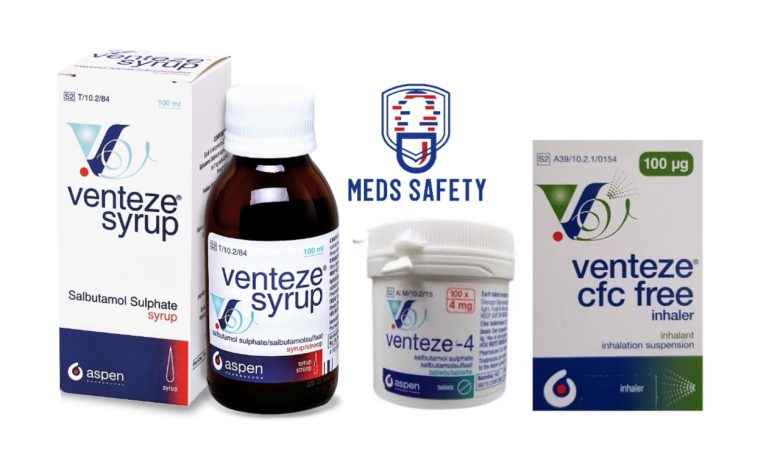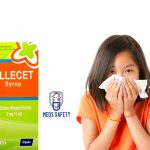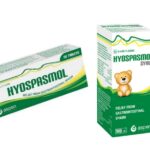Venteze Syrup, Inhaler & Tablets: Uses, Dosage, Side Effects, Interactions

Venteze is a widely used medication primarily indicated for the management of respiratory conditions, particularly asthma and chronic obstructive pulmonary disease (COPD). Venteze contains salbutamol sulphate as the active ingredient.
Salbutamol is a bronchodilator medication that belongs to a class of drugs called beta-2 adrenergic agonists. It is one of the most common medications used to relieve symptoms associated with various respiratory disorders, particularly bronchoconstriction and airway obstruction. Salbutamol Sulphate is the salt form of salbutamol and is used in many different formulations, including Venteze.
Salbutamol acts by selectively targeting beta-2 adrenergic receptors in the smooth muscles of the bronchial airways. When these receptors are stimulated, they trigger a series of biochemical events that lead to the relaxation of the airway’s smooth muscles. This relaxation results in bronchodilation, opening up the airways and allowing for easier and more efficient breathing.
Venteze is available in 4 variants namely:
- Venteze-2 Tablets: Each tablet contains 2 mg of salbutamol in the form of salbutamol sulphate. It is sugar-free.
- Venteze 4 Tablets: Each tablet contains 4 mg of salbutamol in the form of salbutamol sulphate. It is sugar-free.
- Venteze Syrup: Each 5 ml of syrup contains 2 mg of salbutamol in the form of salbutamol sulphate. It includes a preservative, Sodium benzoate at a concentration of 0.2% m/v, and a sweetener, Saccharin sodium, at a concentration of 10 mg.
- Venteze CFC-free inhaler: This inhaler contains 2 mg of salbutamol and is designed to provide rapid, dependable, and secure relief by restoring normal breathing in individuals facing these respiratory challenges. Each actuation of this 200-dose canister delivers 100 micrograms (ug) of salbutamol.
Indications and Uses
Venteze is used in the management of the following conditions:
1. Asthma: Venteze is commonly prescribed for the treatment and management of asthma. It provides rapid relief from acute asthma symptoms, including shortness of breath, wheezing, and chest tightness.
2. Chronic Obstructive Pulmonary Disease (COPD): Patients with COPD, including chronic bronchitis and emphysema, can benefit from Venteze to alleviate airflow obstruction and improve their breathing.
3. Bronchospasm: This medication can be used for the relief of bronchospasm associated with various respiratory conditions, including exercise-induced bronchospasm.
4. Other Respiratory Conditions: In some cases, healthcare professionals may prescribe Venteze for other respiratory conditions, as determined by their clinical judgment.
How to use Venteze
The appropriate dosage of Venteze depends on the patient’s age, condition, and the severity of their symptoms. It is crucial to follow the prescribing physician’s instructions. Generally, the recommended dosages for Venteze are as follows:
For Adults:
- Venteze-2 And Venteze 4 Tablets: In the case of these tablets, the usual recommended dose for adults ranges from 2 mg to 4 mg. This dosage should be taken three to four times daily, and it is important to swallow the tablets whole with water or another suitable liquid. Precise adherence to the prescribed dose is crucial to ensure effective and safe administration.
- Venteze Syrup: For adults, the recommended dosage of Venteze Syrup is between 5 ml and 10 ml, equivalent to 1 to 2 measures. This regimen involves taking the syrup three to four times a day. Some patients may require higher dosages, up to 20 ml, as determined by a healthcare professional. The syrup can be accurately measured using the provided measuring device, and it should be administered orally.
For Special Populations:
Elderly Population: When dealing with elderly patients, it is advisable to initiate treatment with the lower recommended dose. This approach minimizes the risk of adverse effects, ensuring the well-being of elderly individuals.
Pediatric Patients: It is important to note that the safety and effectiveness of Venteze in children under 2 years of age have not yet been established. Therefore, the use of this medication in this age group should be approached with caution.
- Venteze-2 And Venteze 4 Tablets for Children: For children aged 2 to 6 years, the recommended dose is 1 mg to 2 mg, taken three to four times daily. Children aged 6 to 12 years should take 2 mg three to four times daily. In cases involving children over 12 years, they can follow the adult dosage recommendations.
- Venteze Syrup For Children: When administering Venteze Syrup to children, the recommended dosage varies with age. For children aged 2 to 6 years, the prescribed dosage is 2.5 ml to 5 ml, equivalent to ½ to 1 measure. This should be administered three to four times daily. For children over 6 years, the dose is 5 ml (1 measure) three to four times daily.
In all cases, it is imperative to follow these dosage guidelines as directed by a healthcare provider. The exact dosage may vary based on the individual’s condition, so consulting a healthcare professional is vital to ensure the safe and effective use of these medications. Special attention should be given to the specific dosing recommendations for the elderly and pediatric populations, considering their unique needs and potential differences in response to the medication.
Potential Side Effects
Venteze, like all medications, may cause side effects. Not everyone will experience these side effects, and their severity can vary. Common side effects include:
1. Tremors: Some individuals may experience mild hand tremors after taking Venteze. These tremors are generally benign and subside with time.
2. Nervousness: Salbutamol can stimulate the nervous system, leading to feelings of restlessness or anxiety in some users.
3. Headache: Headaches are a relatively common side effect and are usually mild and transient.
4. Palpitations: An increased heart rate or palpitations can occur, especially when higher doses are taken.
5. Dry Mouth or Throat: Dryness in the mouth and throat may occur due to the medication’s anticholinergic effects.
6. Muscle Cramps: Rarely, some individuals may experience muscle cramps.
7. Gastrointestinal Symptoms: Venteze may lead to gastrointestinal disturbances, such as nausea or vomiting.
It’s important to consult with a healthcare provider if any side effects are severe or persist. In some cases, an alternative medication or dosage adjustment may be recommended to minimize side effects.
Safety Precautions:
1. Allergies: Inform your healthcare provider of any allergies you have, particularly if you are sensitive to Salbutamol or other beta-2 adrenergic agonists.
2. Medical History: Discuss your medical history with your healthcare provider, especially if you have a history of heart conditions, high blood pressure, diabetes, thyroid disorders, or seizures.
3. Pregnancy and Breastfeeding: If you are pregnant or breastfeeding, consult your healthcare provider before using Venteze to assess potential risks and benefits.
4. Concomitant Medications: Inform your healthcare provider about all medications, including prescription, over-the-counter, and herbal supplements, that you are currently taking. Some medications may interact with Salbutamol.
5. Driving and Operating Machinery: Salbutamol may cause dizziness and tremors in some individuals. It’s important to assess how it affects you before driving or operating heavy machinery.
Overdose and Emergency Care
If you suspect an overdose of Venteze, seek immediate medical attention. Symptoms of overdose may include severe tremors, chest pain, fast or irregular heartbeat, seizures, and loss of consciousness.
Storage
Store Venteze at room temperature away from moisture and light, and keep it out of the reach of children.





